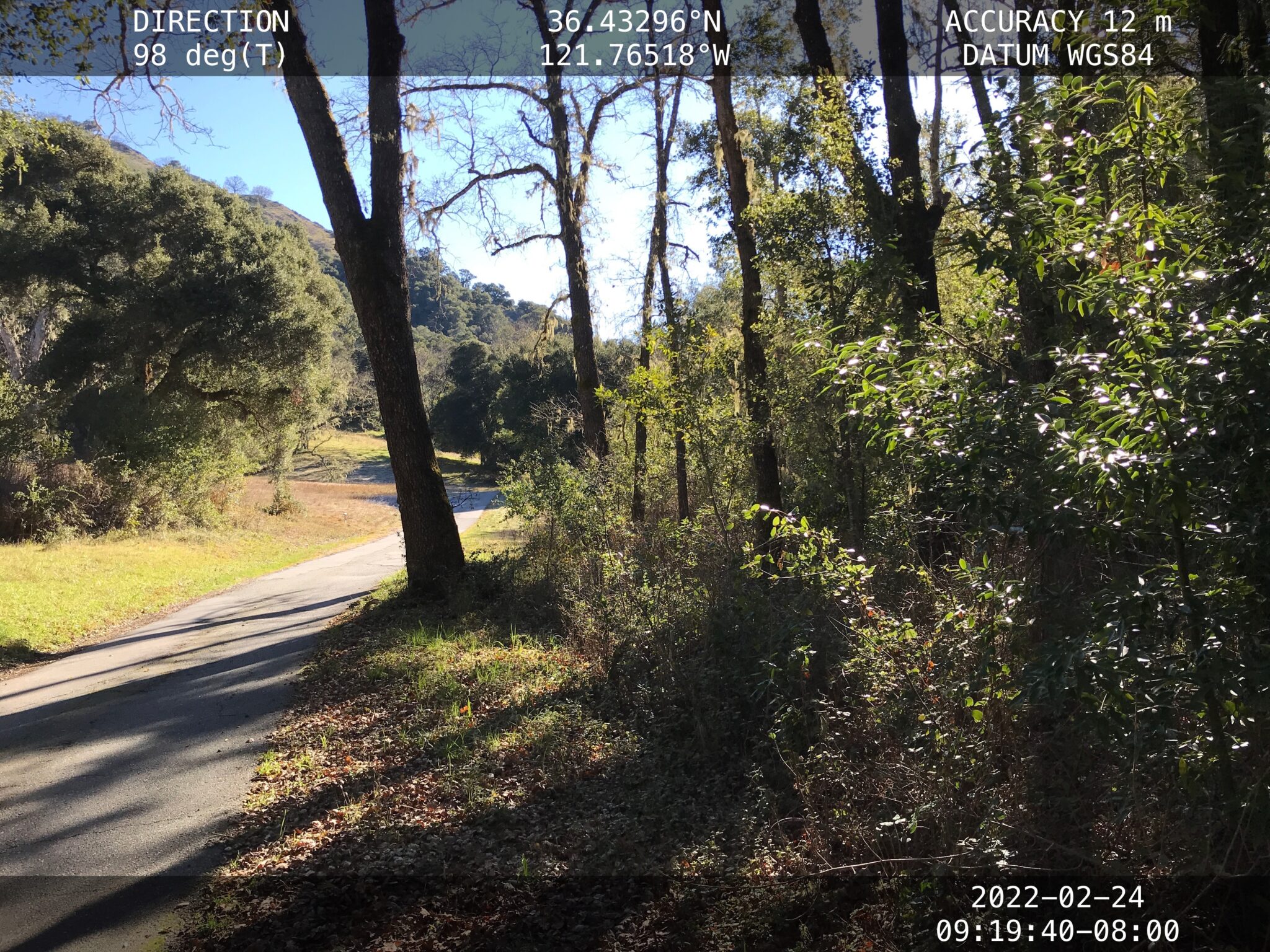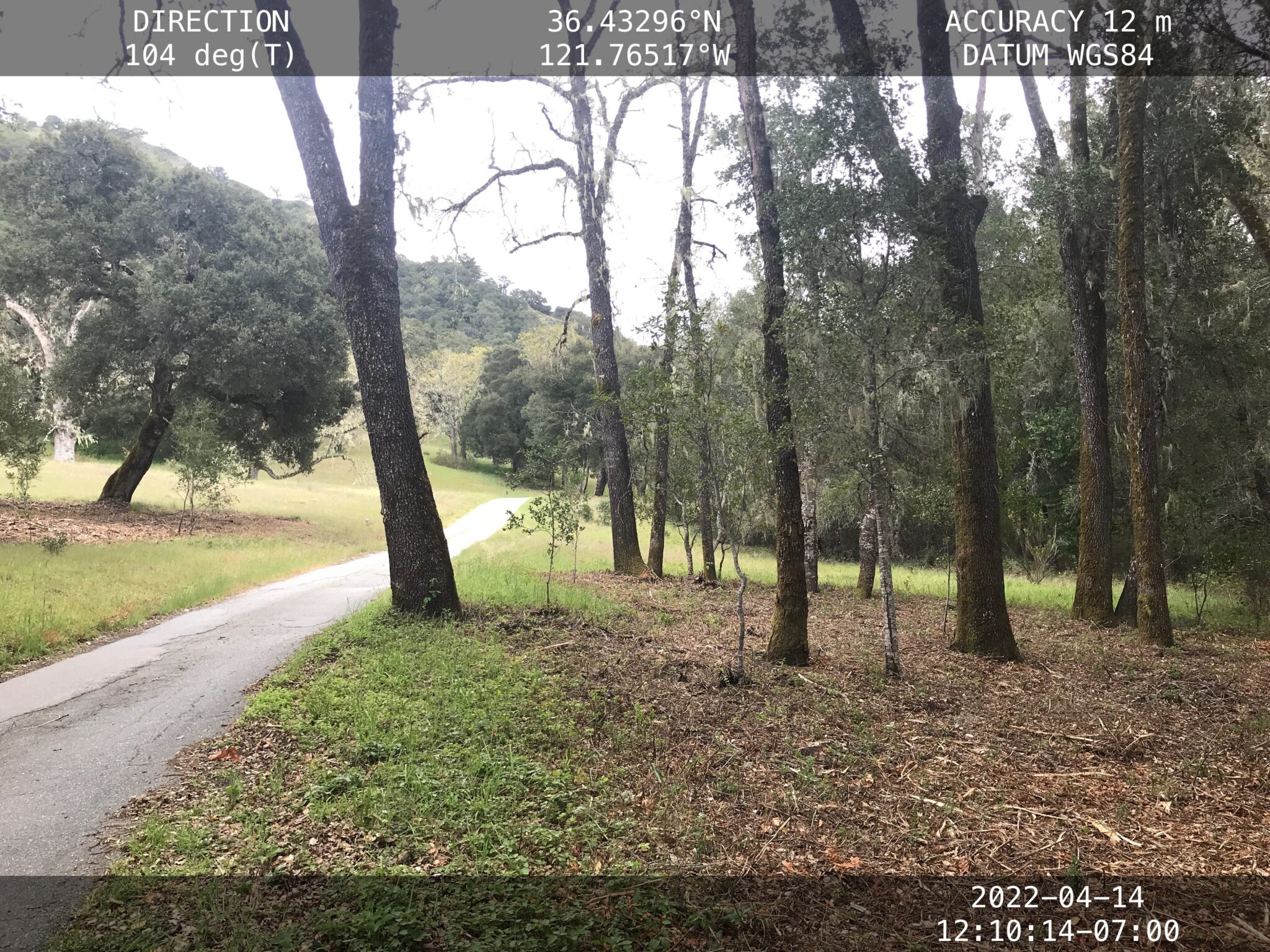A shaded fuel break along Dormody Road, where young bay laurel trees and shrubs have been cleared in the understory. Photo by Jackson Brooke.
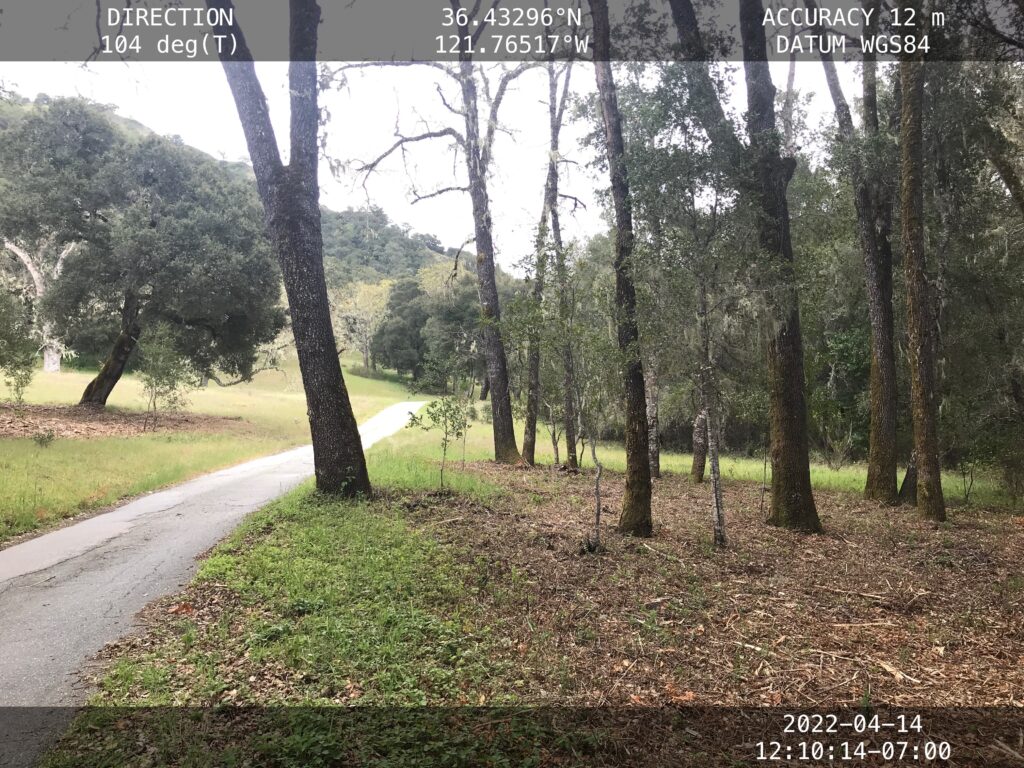
Shaded Fuel Breaks Increase Fire Safety on The Preserve
May 6, 2022
By Jackson Brooke, Restoration Manager
The Conservancy’s vision for fire and fuels management on The Preserve is one that harmoniously combines the protection of life and property with ecological management goals. Our proactive wildfire resilience efforts include prescribed burns, a Preserve-wide fuel management plan, lot-specific fuel management plans for individual homeowners, and shaded fuel breaks. Coordinated with Preserve leadership, landowners, and fire agencies, our goal is to improve wildfire safety for The Preserve and neighboring communities in Carmel Valley.
With three full-time staff members and 4 seasonal employees whose primary responsibilities include work that reduces fuels, the Conservancy treats nearly 2,500 acres each year between our Conservation Grazing Program and the invasive species removal our Restoration Program performs.
In 2021, The Santa Lucia Conservancy received a $1.145 million grant from the Cal Fire Los Padres Strategic Community Fuelbreak Collaborative through the Resource Conservation District of Monterey County to increase our fire preparedness efforts by creating a network of strategic fuel breaks on The Preserve.
A shaded fuel break is an area of land where vegetation is significantly reduced so that a wildfire burning nearby can be more readily and safely suppressed. Designed to give firefighters critical access points for fire mitigation efforts, the Conservancy is using this grant to transform primary ingress and egress routes on The Preserve into shaded fuel breaks.
To date, we have created 58 acres of shaded fuels along Chamisal Pass, Long Ridge Trail, San Clemente Trail, Goodrich Trail, and Dormody Road. By spring of 2024, we will have created fuel breaks along every main road across the 20,000-acre Preserve.
By turning roads into shaded fuel breaks, we are increasing safety for both residents and fire personnel in the event that a wildfire reaches The Preserve. Lower fuel loads on roadsides will reduce heat and flame length, allowing residents to safely evacuate and firefighting personnel to aggressively fight a wildfire.
David Casarez of Casarez Excavating, Inc. is helping us complete this work by limbing up trees, masticating brush and other thick vegetation, and conducting forest thinning in wooded or brushy areas along roadsides, complementing the work the Community Services Disctrict (CSD) does to mow grassy roadside areas.
Chamisal Pass near the Gatehouse
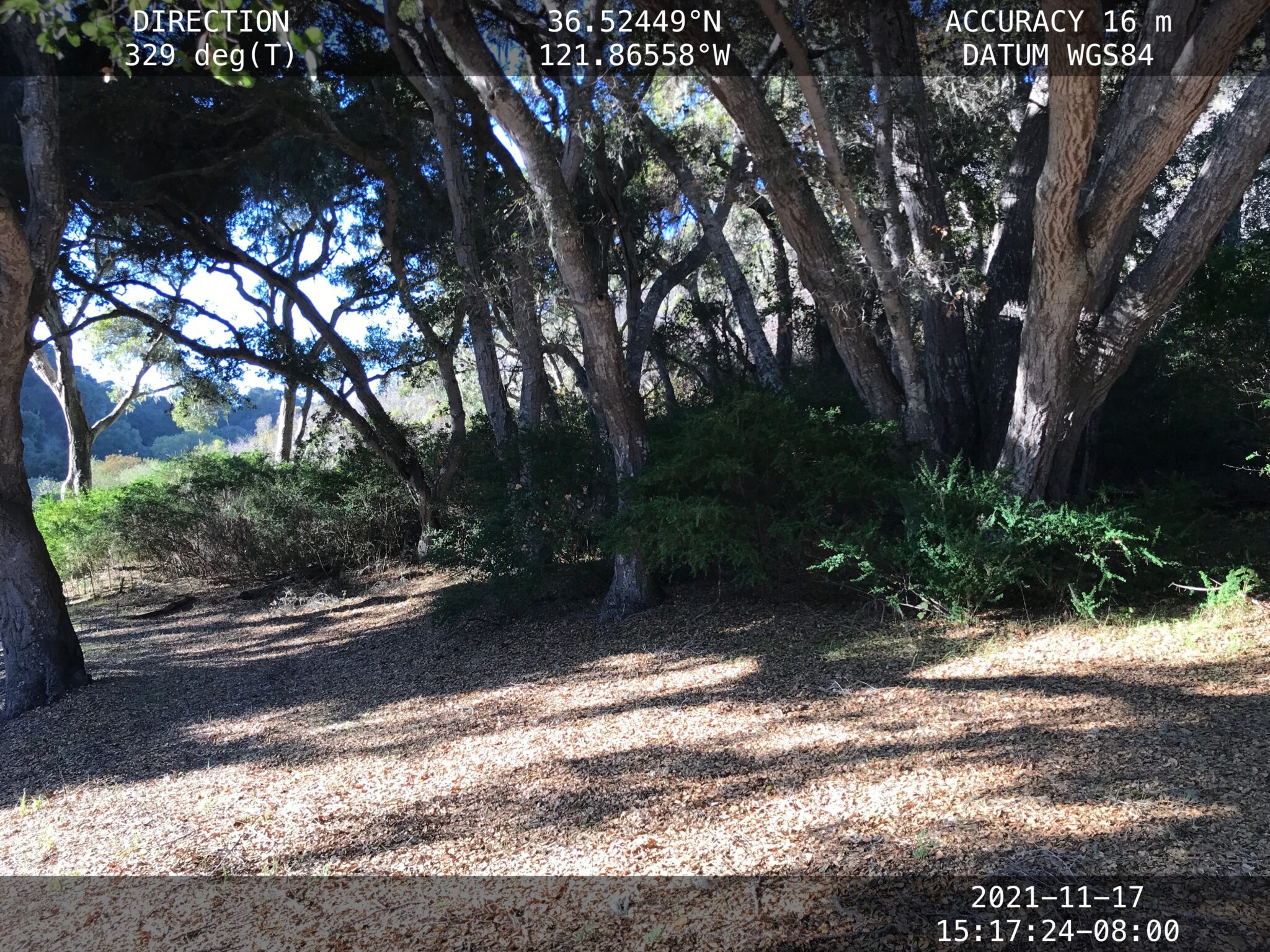
BEFORE: French broom had taken over the area under the oak trees and posed a serious risk. French broom acts as a ladder fuel, allowing a low intensity fire in the understory to climb up into the crown of trees, dramatically increasing the fire intensity and causing extreme fire behavior.
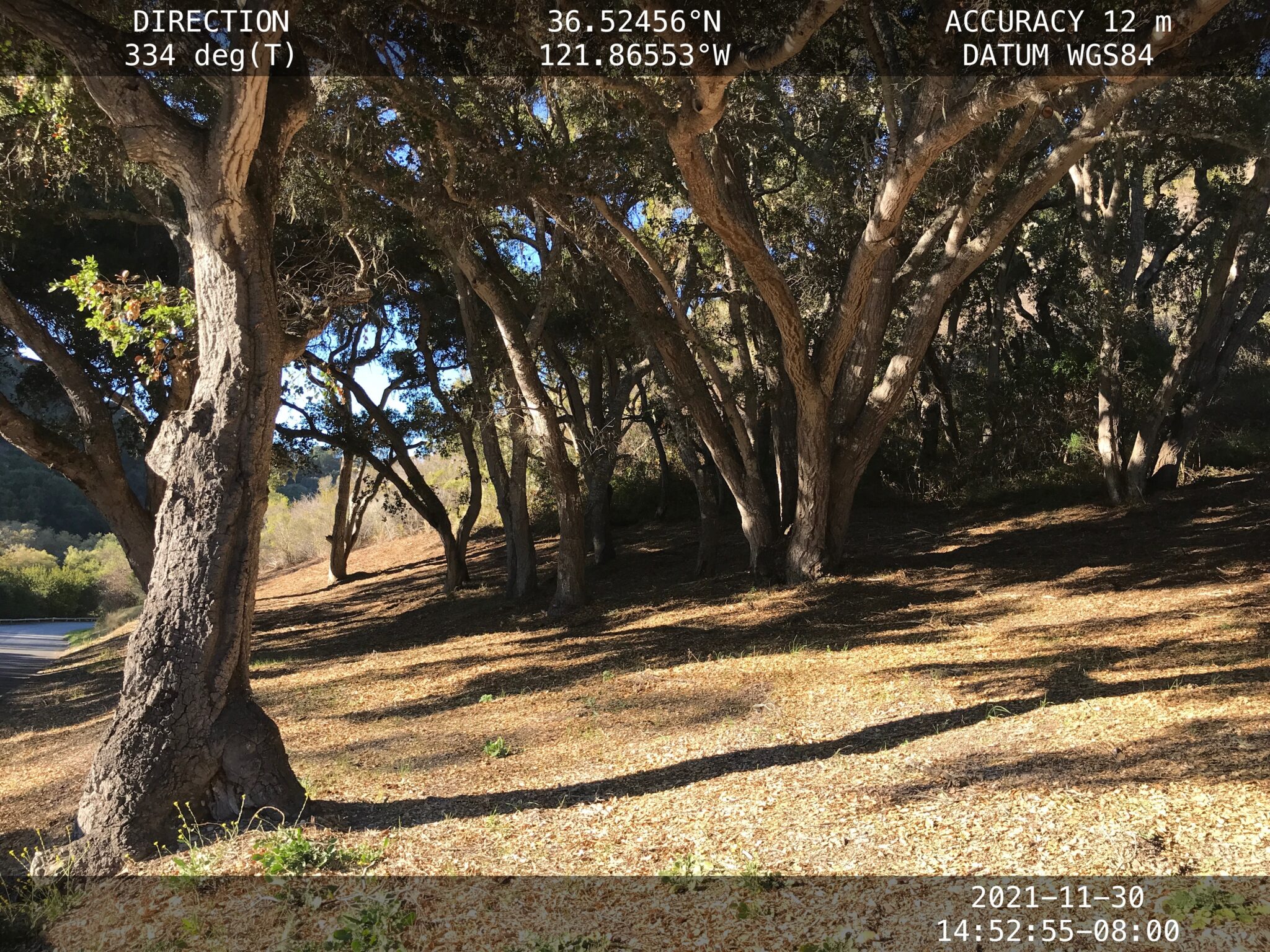
AFTER: Now that the French broom has been cleared from the understory, a potential wildfire is less likely to climb up into the tree canopy and spread across the road through a crown fire.
Chamisal Pass near Wild Boar Run
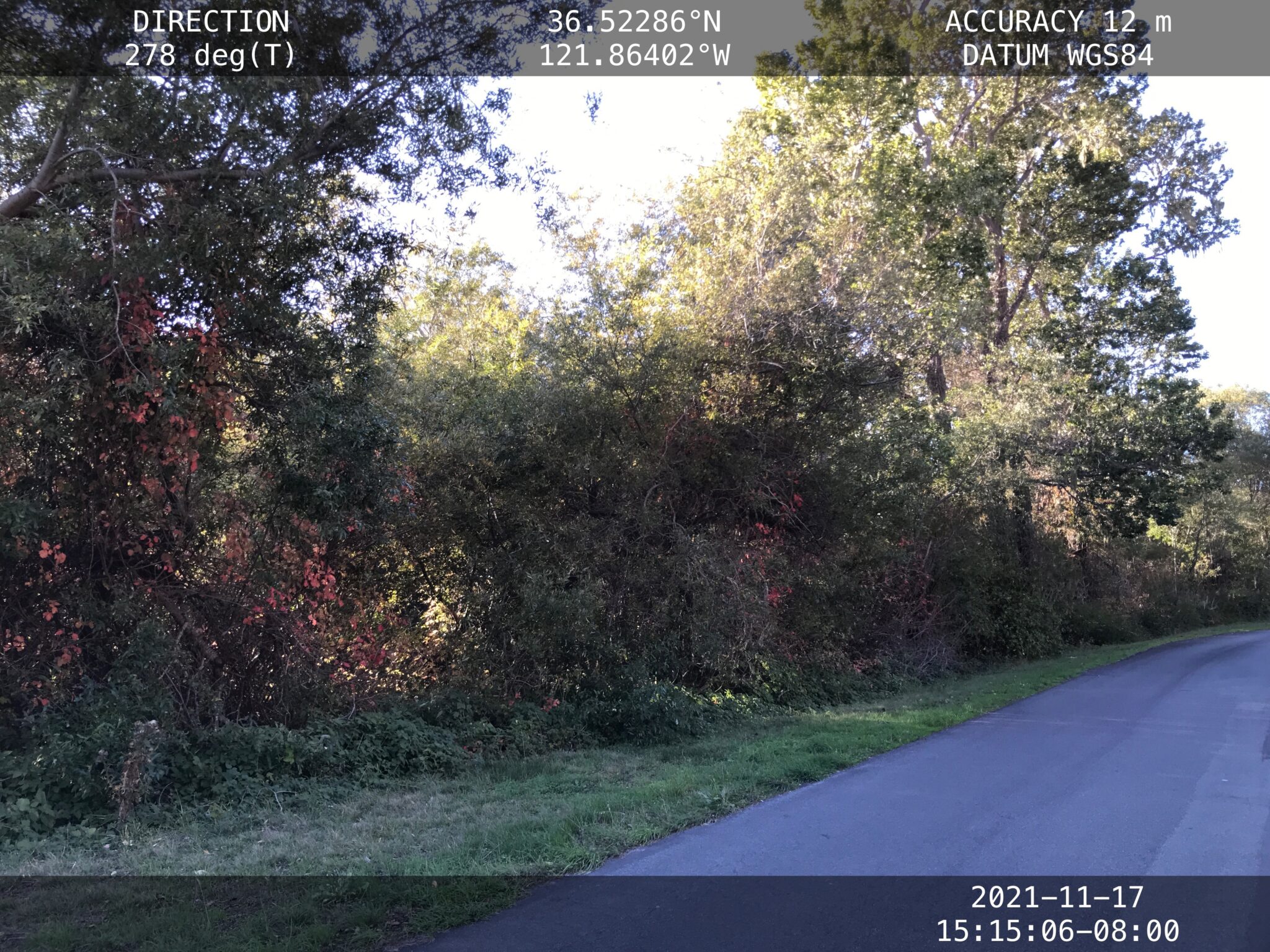
BEFORE: This area, just before Wild Boar Run, was completed late in 2021. thickets of poison oak, blackberry, and willows grew close to the road, creating a fire hazard.
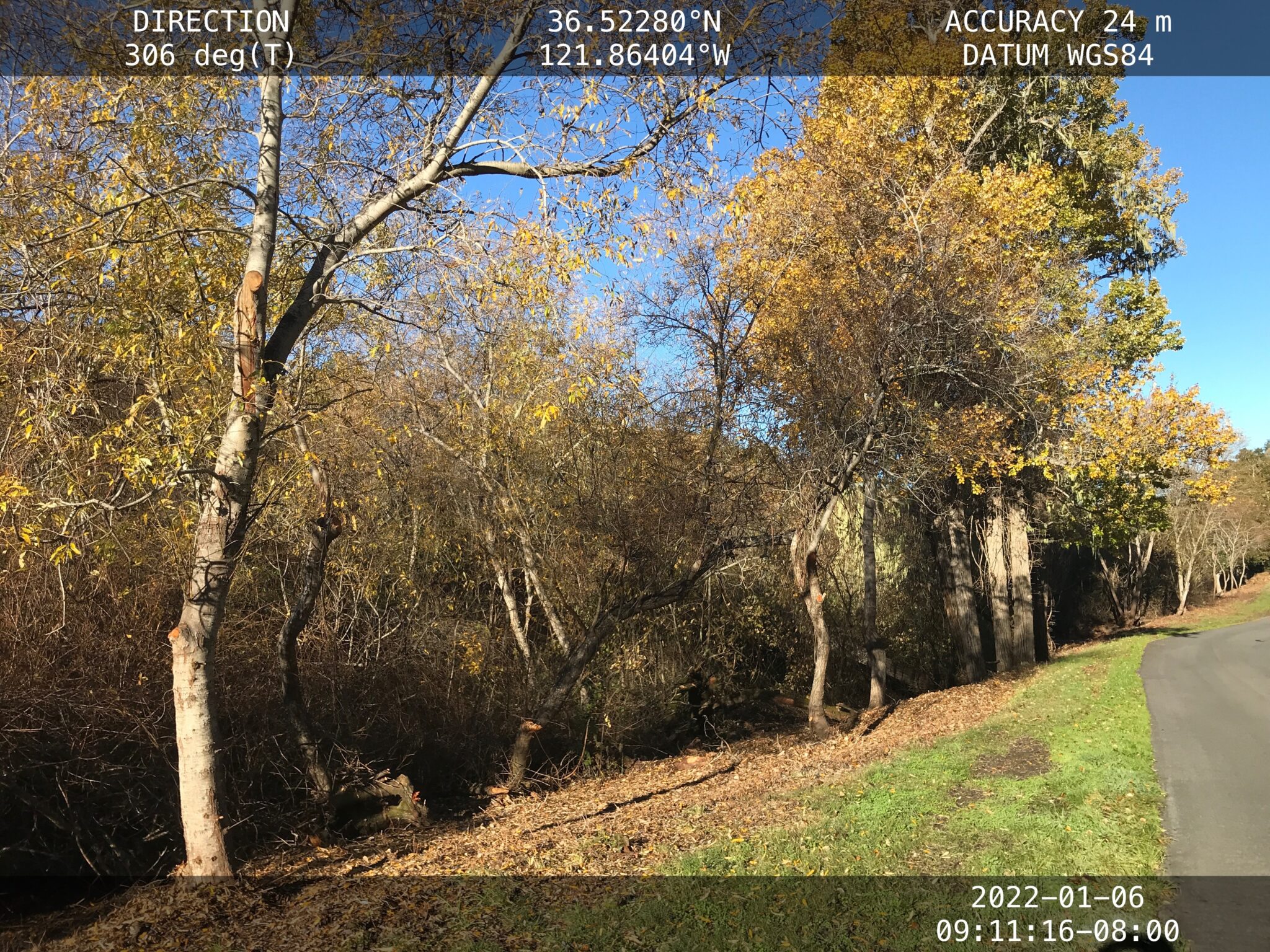
AFTER: By pushing back the vegetation, the heat that vehicles would be exposed to in a wildfire situation is dramatically reduced.
Chamisal Pass near Corral Run
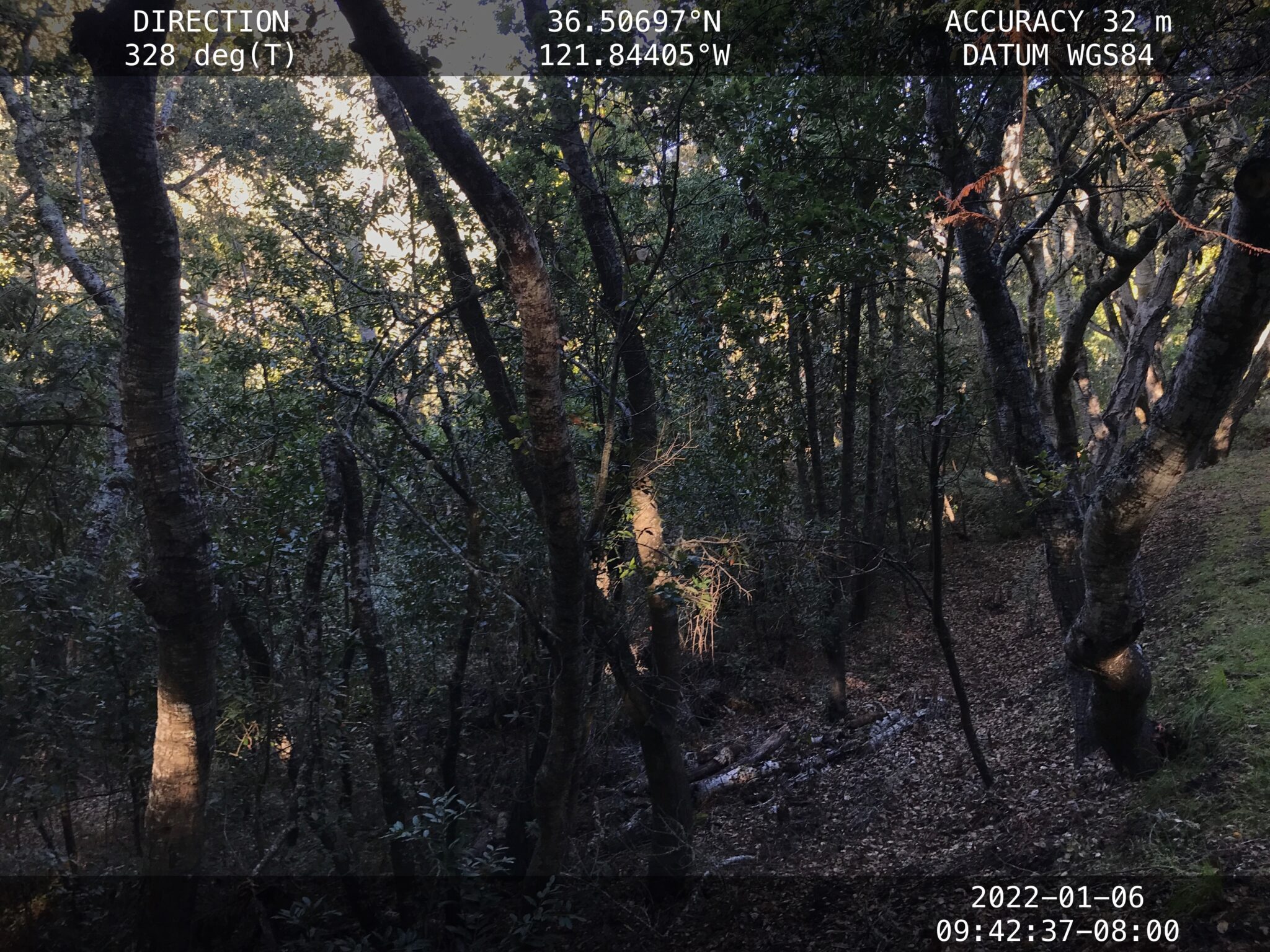
BEFORE: Near Corral Run, the Chamisal Trail parallels the road. The strip between the trail and the road was filled with small bay trees and shrubs.

AFTER: Once the vegetation was cleared out, it revealed a beautiful, open oak woodland understory that creates a much safer ingress and egress route.
Dormody Road
In the coming months, Preserve residents will see David Casarez masticating along Robinson Canyon Road, Rancho San Carlos Road, and East Vasquez. This work helps create a safer and more fire permeable landscape, not only for the protection of life and property on The Preserve, but for all communities in Carmel Valley.
If you have any questions about fire safety and management on The Preserve, please contact Executive Director Jamison Watts at [email protected].
